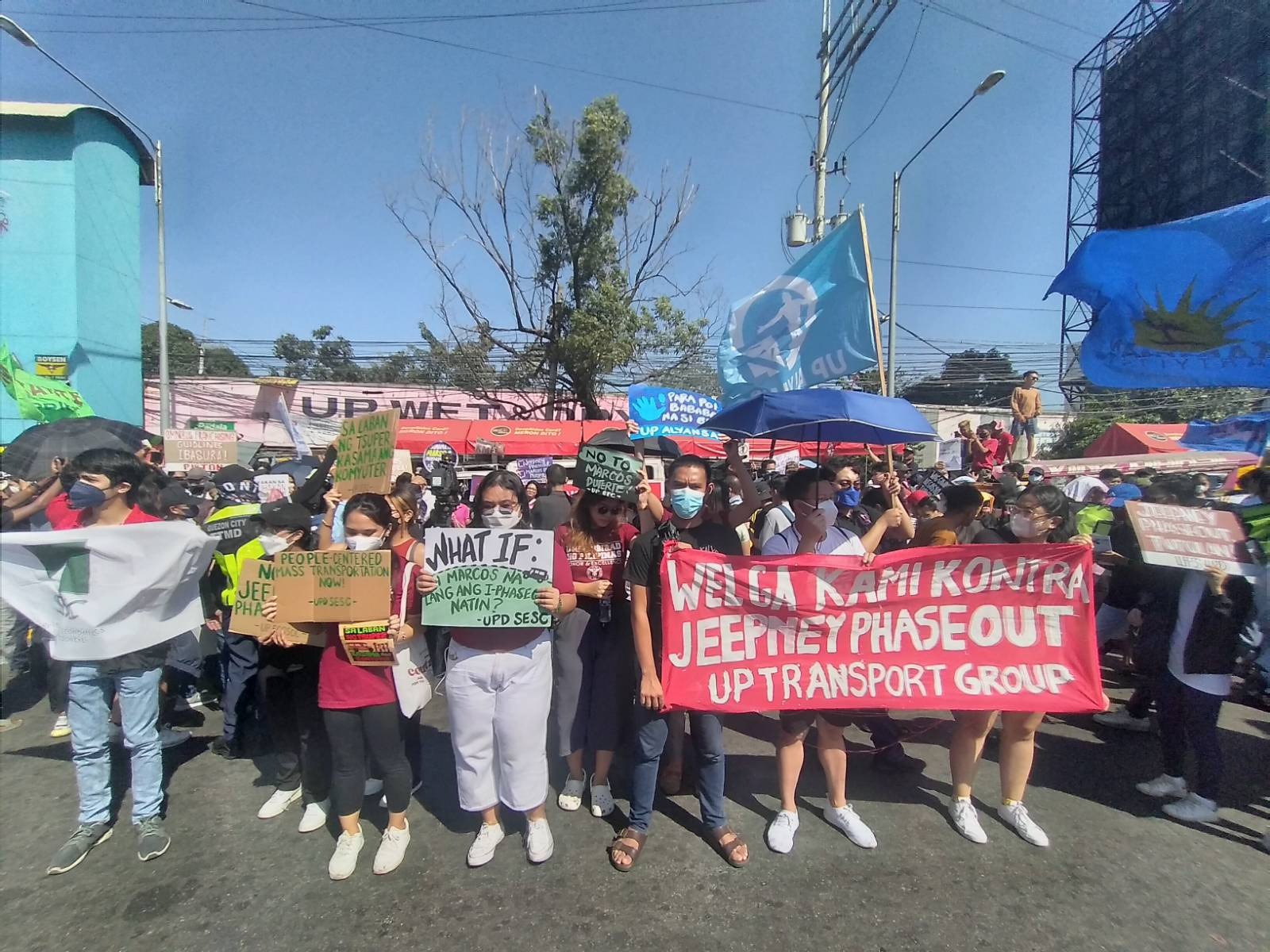Transit Advertising Philippines: Get To Countless Commuters Daily
Transit Advertising Philippines: Get To Countless Commuters Daily
Blog Article
Understanding the Function of Transportation Marketing in Enhancing Brand Name Visibility and Customer Interaction
Transportation marketing has actually arised as a critical component in the marketing landscape, supplying distinct possibilities for brand names to elevate their exposure and involve consumers successfully. With the ability to reach a varied and restricted audience during their daily commutes, these advertising and marketing approaches are not simply regarding presence; they are regarding creating significant connections with possible consumers. As we check out the complex advantages and cutting-edge techniques within transit advertising, it ends up being important to consider just how these elements collectively influence consumer assumption and behavior, questioning concerning their lasting effect on brand name loyalty.
Definition of Transportation Advertising And Marketing
Transit advertising and marketing describes the practice of advertising items, services, or brands via ads put around mass transit systems. This type of marketing encompasses a selection of placements, consisting of posters on buses and trains, electronic screens at transit stations, and wraps on the exterior of lorries. It intends to reach a varied target market, profiting from the high foot web traffic connected with public transit.
Transportation advertising and marketing is tactically positioned to record the interest of travelers, who typically spend significant time taking a trip or waiting. By integrating ads into the day-to-day routines of people, brands can develop an enduring impression and foster brand name acknowledgment. The medium is especially effective in metropolitan environments, where public transport is a key setting of travel.
Furthermore, transit marketing can facilitate local targeting, permitting organizations to reach specific demographics based on transit paths and terminal locations. As metropolitan populaces grow and using public transport boosts, this advertising and marketing method has obtained importance as a crucial component of integrated advertising strategies. The dynamic nature of transportation advertising, integrated with its capacity to engage consumers in a captive setting, emphasizes its relevance in contemporary advertising and marketing practices.
Benefits of Transit Marketing
The performance of transit marketing depends on its capacity to supply a multitude of benefits to brands looking for to enhance visibility and engagement. One of the main advantages is the substantial reach it supplies; transit ads can successfully target varied demographics throughout metropolitan locations, getting to both travelers and pedestrians alike. This broad direct exposure significantly improves brand awareness.
One more advantage is the high regularity of perceptions. As transit cars travel along recognized routes and stop at several locations, they create repetitive direct exposure that enhances brand name messages. This frequency fosters knowledge, which is crucial in customer decision-making.
Transportation advertising and marketing is likewise cost-effective compared to various other media platforms. Provided its expansive reach and potential for high impressions, brands typically experience a reduced expense per thousand perceptions (CPM), optimizing their advertising and marketing spending plan.
Furthermore, transportation ads can produce a sense of community connection. By lining up with neighborhood transit systems, brand names can reverberate with regional audiences and promote a sense of neighborhood pride. This local technique enhances brand commitment and interaction, making transportation marketing a compelling selection for services aiming to strengthen their visibility out there.

Effective Methods for Transportation Campaigns
To make best use of the effect of transit projects, brand names must take advantage of calculated preparation and execution customized to their target audience. Initially, identifying the group attributes of the audience making use of public transit is critical. This allows brand names to develop Homepage customized messaging that reverberates with prospective customers.
Following, picking the best transportation tools is important. Whether using bus wraps, metro posters, or electronic screens, each medium has distinct benefits that can boost visibility. As an example, vibrant visuals on bus wraps can stand out, while discover this digital ads can be upgraded frequently to mirror prompt promotions.
Furthermore, incorporating a natural branding strategy across transit systems ensures consistency and enhances the brand name's identification. Making use of attractive styles and remarkable taglines will certainly enhance brand name recall amongst travelers.
Last but not least, timing is a crucial factor in performing successful transit campaigns. Launching campaigns during peak traveling hours or regional events can substantially boost presence and involvement. By employing these approaches, brand names can properly harness the possibility of transportation marketing, promoting greater understanding and connection with their target audience. Ultimately, a well-executed transportation project can drive considerable development in brand name visibility and customer involvement.

Gauging Effect and Involvement
In examining the efficiency of transit marketing campaigns, exact measurement of impact and interaction is vital for brands looking for to optimize their advertising and marketing methods. Metrics such as reach, frequency, and impacts supply foundational data to assess exposure. Analyzing these variables aids figure out how many potential clients are exposed to the ads during their everyday commutes.
Engagement can be additional visit the site gauged with consumer interactions, such as internet site traffic, social media sites discusses, and straight responses to calls-to-action included in the advertisements. Utilizing devices like QR codes or one-of-a-kind URLs can promote tracking of consumer actions straight linked to transit projects. Surveys and responses mechanisms likewise offer as valuable techniques to gather qualitative information on consumer perceptions and recall of the ad.
Moreover, advanced analytics and attribution designs can associate transportation direct exposure with subsequent investing in behavior, providing understandings right into the return on financial investment. By employing an extensive method that integrates quantitative and qualitative actions, brands can develop a nuanced understanding of their transit marketing effect. Eventually, this data-driven approach makes it possible for brand names to refine their campaigns, ensuring they resonate effectively with target audiences and enhance total brand name visibility.
Case Studies of Successful Campaigns
Successful transit ad campaign work as compelling examples of just how efficient methods can raise brand visibility and engagement. Transit Advertising Philippines. One notable case is the "I Love New york city" project, which transformed the city's image and attracted millions of visitors. By using train ads, billboards, and bus covers, the project produced a strong, natural brand name identification, causing a substantial uptick in tourist and regional business patronage
An additional excellent campaign is Coca-Cola's "Share a Coke" campaign, which leveraged transportation marketing to customize the brand experience. By including prominent names on promotional products across various transit platforms, Coca-Cola cultivated a much deeper emotional link with consumers, urging them to share their experiences on social networks.
Additionally, the "Got Milk?" project efficiently utilized public transport ads to get to a broad target market, reinforcing the message of the relevance of milk in a balanced diet regimen. The project saw a measurable increase in milk intake in target demographics.
These study illustrate that when executed attentively, transit advertising can dramatically enhance brand name visibility, foster customer involvement, and drive measurable outcomes, demonstrating its crucial role in contemporary advertising and marketing techniques. - Transit Advertising Philippines
Verdict
In conclusion, transportation advertising offers as an important device for boosting brand exposure and cultivating customer engagement. By using purposefully placed ads within public transport systems, brands can efficiently get to varied target markets and reinforce recognition through constant direct exposure. The execution of targeted messaging and innovative strategies even more intensifies the impact of transit campaigns. Eventually, the capacity to gauge involvement and analyze successful situation researches emphasizes the performance of transportation advertising and marketing in driving brand name commitment and customer communications.
Transportation marketing has emerged as a crucial element in the advertising landscape, providing special chances for brands to elevate their presence and involve consumers successfully.Furthermore, transportation advertising and marketing can promote local targeting, permitting services to reach specific demographics based on transit courses and station locations.In reviewing the efficiency of transit advertising and marketing campaigns, accurate dimension of influence and interaction is important for brand names seeking to optimize their advertising techniques.Effective transit advertising and marketing projects serve as compelling instances of just how reliable methods can elevate brand name presence and engagement.In verdict, transit advertising and marketing serves as an essential tool for boosting brand name presence and fostering customer engagement.
Report this page